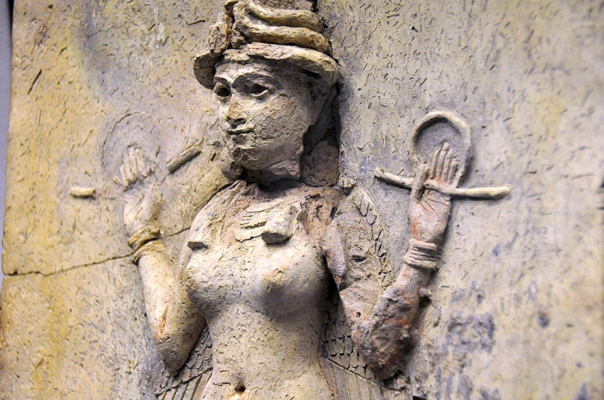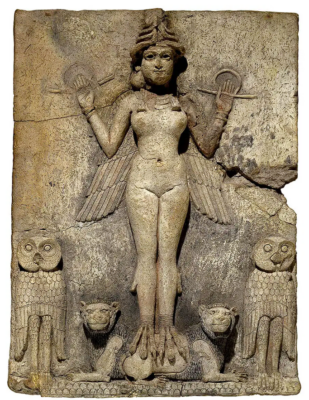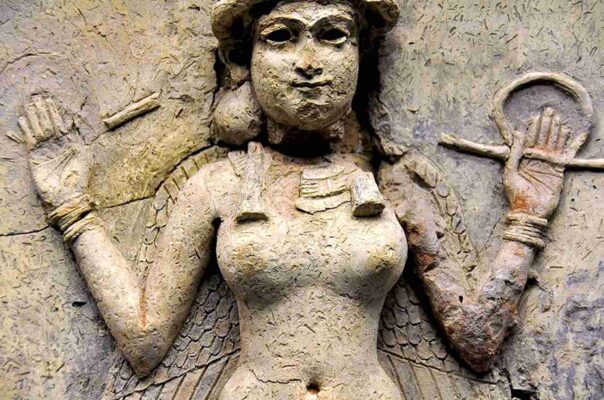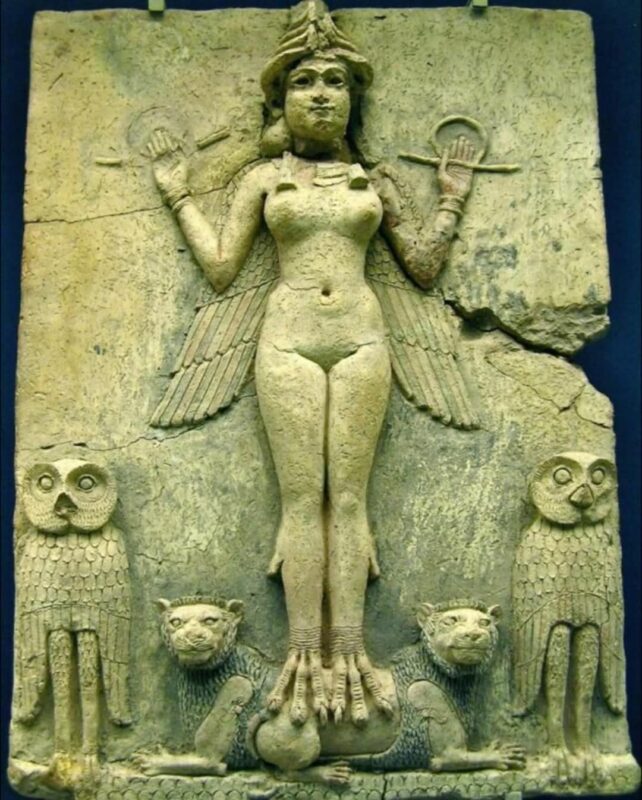The Queen of the Night Relief, also known as the Burney Relief, is one of the most iconic artifacts of Mesopotamian culture. Dating back to around 1800–1750 BCE, this remarkable piece offers a glimpse into the artistic and spiritual life of ancient Babylon. Now housed in the British Museum, the relief continues to captivate scholars and visitors alike with its intricate design and profound symbolism. Follow archeology.dulichvn.net to discover many hidden mysteries that have yet to be discovered.

Historical Context of the Queen of the Night Relief
Dating and Origins
The Queen of the Night Relief hails from the Old Babylonian period, a golden age of cultural and artistic achievement in ancient Mesopotamia. This remarkable artifact is believed to have been created between 1800 and 1750 BCE, a time when Babylon emerged as a powerful and influential city-state under the rule of Hammurabi and his successors. The relief’s design and craftsmanship reflect the sophisticated artistic and symbolic traditions of the era, providing valuable insight into the religious and cultural life of the time.
Discovery and Preservation
Although the exact location and context of the relief’s discovery remain unknown due to the absence of detailed excavation records, the artifact surfaced in the early 20th century and quickly captured scholarly attention. Its enigmatic beauty and intricate detail have made it one of the most celebrated pieces of Mesopotamian art. Today, the Queen of the Night Relief is prominently exhibited in the British Museum in London, where it continues to be a focal point of research, debate, and admiration.
Mesopotamian Artistic Traditions
The Queen of the Night Relief exemplifies the high-relief sculptural techniques mastered by Mesopotamian artisans. Its intricate design portrays a winged goddess, often identified with Ishtar or Ereshkigal, flanked by symbols of power and mystery, such as lions, owls, and a rod-and-ring motif. These elements are steeped in symbolic meaning, representing divine authority, the underworld, and the natural order. The precise carving, harmonious composition, and rich iconography illustrate the depth and sophistication of Babylonian art, reflecting the cultural and spiritual complexities of the ancient world.

Symbolism and Iconography
The Winged Goddess: A Symbol of Divine Power
At the center of the Queen of the Night Relief stands a winged goddess, an awe-inspiring figure embodying divine authority and majesty. Her regal posture, with arms outstretched and wings unfurled, symbolizes her celestial nature and dominion over both earthly and supernatural realms. The goddess stands firmly atop two lions, creatures often associated with strength and guardianship, further emphasizing her commanding presence. This portrayal underscores her pivotal role in Mesopotamian religion as a figure of immense power and reverence.
Owls as Guardians of Mystery
On either side of the goddess are intricately depicted owls, creatures steeped in symbolism within Mesopotamian culture. Their association with the night, wisdom, and the unknown adds a layer of mystique to the relief. The owls likely serve as guardians or intermediaries, linking the goddess to nocturnal and underworld realms. Their presence reinforces the enigmatic and otherworldly aura of the artifact, suggesting themes of protection, insight, and the interplay between light and darkness.
Fertility, Strength, and Divine Vitality
The lions beneath the goddess’s feet, depicted with muscular precision, are potent symbols of vitality, dominance, and protection. Combined with the goddess’s poised and commanding demeanor, they evoke themes of fertility, life-giving power, and unyielding strength. These elements resonate with the attributes of prominent deities in the Mesopotamian pantheon, such as Ishtar, the goddess of love, war, and fertility, or Ereshkigal, ruler of the underworld. The relief’s composition unifies these symbols to create a powerful representation of divine balance—life and death, strength and nurturing, authority and mystery.

See more: Mummy of Thuya: A Glimpse into Ancient Egyptian Royalty
The Identity of the Winged Goddess
Links to Ishtar: The Goddess of Love, Fertility, and War
A prominent interpretation identifies the winged goddess as Ishtar, one of the most revered deities in the Mesopotamian pantheon. Ishtar, known for her dual aspects as the goddess of both fertility and war, embodies the paradox of creation and destruction. The lions beneath her feet, symbols of strength and authority, are closely tied to Ishtar’s iconography, reflecting her dominion over wild beasts and her role as a protector of life. Similarly, the owls, often linked to mystery and nocturnal wisdom, resonate with Ishtar’s connection to celestial and earthly cycles, further reinforcing this association.
Ereshkigal: Queen of the Underworld
An alternative theory suggests that the goddess depicted in the relief is Ereshkigal, the Mesopotamian goddess of the underworld. The nocturnal and otherworldly elements in the relief, such as the owls and the shadowy ambiance evoked by her wings, align with Ereshkigal’s domain over death and the afterlife. As ruler of the underworld, Ereshkigal represents the mysterious and inevitable cycle of life and death, offering a compelling counterpoint to Ishtar’s life-affirming aspects. This interpretation emphasizes the dualities inherent in Mesopotamian mythology, where the boundaries between deities and their domains often blur.
A Syncretic or Lesser-Known Deity
Another intriguing possibility is that the figure represents a syncretic or lesser-known deity, embodying characteristics of multiple gods or a local variation of a prominent divine figure. Mesopotamian religion was highly dynamic, evolving over centuries and often blending regional and cultural influences. This theory suggests the Queen of the Night Relief could be a unique artistic expression, encapsulating the fluid and adaptive nature of religious beliefs in ancient Mesopotamia. By synthesizing traits associated with Ishtar, Ereshkigal, and other deities, the artifact reflects the complexity and richness of Mesopotamian spiritual life.

Conclusion
The Queen of the Night Relief remains a captivating enigma, embodying the artistic and spiritual richness of ancient Mesopotamia. Whether a representation of Ishtar, Ereshkigal, or another deity, this 4,000-year-old artifact continues to inspire curiosity and scholarly debate. As we uncover more about its origins and significance, the relief’s enduring legacy as a symbol of power, mystery, and divinity persists.


CÁC TIN KHÁC
Mary Walton: The Forgotten Inventor Who Helped Clean Up America’s Cities
Tomb of Queen Nefertari in the Valley of the Queens, Egypt
Discover the Hypostyle Hall of the Temple of Hathor at Dendera
Venus de Losange: Unveiling the Mystery of a 20,000-Year-Old Paleolithic Icon